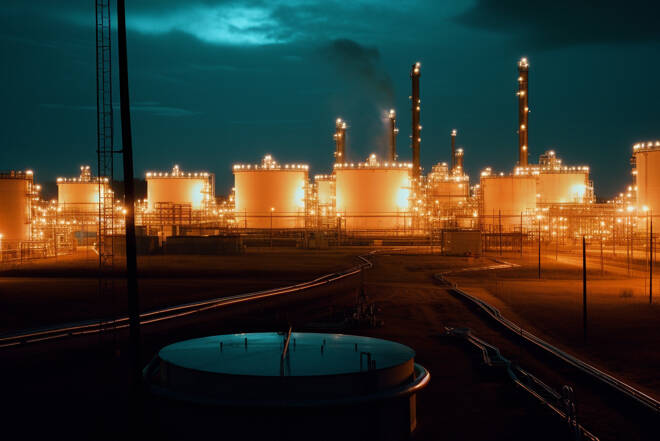Advertisement
Advertisement
Natural Gas News: Bearish Outlook Prevails Ahead of EIA Storage Report
By:
Key Points:
- EIA report expectations lower than average, influencing bearish market sentiment.
- Reduced LNG exports, high storage levels exert downward price pressure.
- Upcoming colder weather may introduce short-term volatility in gas futures.
Overview
U.S. natural gas futures are experiencing a decline, influenced by various factors including weather forecasts, storage reports, and LNG plant outages. The market is poised for volatility in light of the upcoming Energy Information Administration (EIA) report and recent trends in gas prices and production.
At 13:18 GMT, Natural Gas futures are trading $1.646, down $0.012 or -0.72%.
EIA Weekly Storage Report
The EIA storage report, scheduled for release today, is crucial in shaping market sentiment. Expectations point towards a draw of -3 to -6 Bcf, significantly less than the 5-year average of -87 Bcf. The report’s impact is heightened by the anticipation of whether recent trends in perceived lighter production will continue, potentially leading to a bullish outcome.
Weather and Demand Forecast
The weather across most of the interior U.S. is expected to be mild until this weekend, resulting in very low gas demand. However, a shift towards colder temperatures is forecasted late this weekend into next week, likely leading to moderate demand increases due to colder weather in the central, southern, and eastern U.S.
Price Trends and LNG Exports
Natural gas futures are near a two-week low, with a 15% decrease over the past five days. Contributing factors include forecasts of reduced demand and lower gas flows to LNG export plants, primarily due to outages at Freeport LNG’s Texas facility. Despite a 5% drop in U.S. output, prices have fallen, reflecting a surplus in storage and mild winter weather.
Supply Adjustments and Market Response
Gas production is witnessing a decline with major producers like EQT and Chesapeake Energy reducing drilling activities. This reduction is a response to the recent collapse in gas prices, which reached a 3-1/2-year low in February. Additionally, mild weather in the West has led to record-low next-day power prices in Southern California and Arizona.
Short-Term Market Forecast
The market outlook appears bearish in the short term. The combination of lower demand forecasts, reduced LNG exports, and high storage levels suggests a continued downward pressure on prices. However, the upcoming colder weather and potential changes in production could introduce some volatility in the near future.
Technical Analysis
Natural gas futures are lower on Thursday with traders likely targeting the February low at $1.607.
Other than an occasional short-covering rally due to oversold conditions, we’re not expecting a longer-term rally to develop until the summer when a combination of production cuts and hotter temperatures may take prices higher.
Until then, the market is likely to remain in the “Sell the Rally” mode.
About the Author
James Hyerczykauthor
James Hyerczyk is a U.S. based seasoned technical analyst and educator with over 40 years of experience in market analysis and trading, specializing in chart patterns and price movement. He is the author of two books on technical analysis and has a background in both futures and stock markets.
Did you find this article useful?
Latest news and analysis
Advertisement
